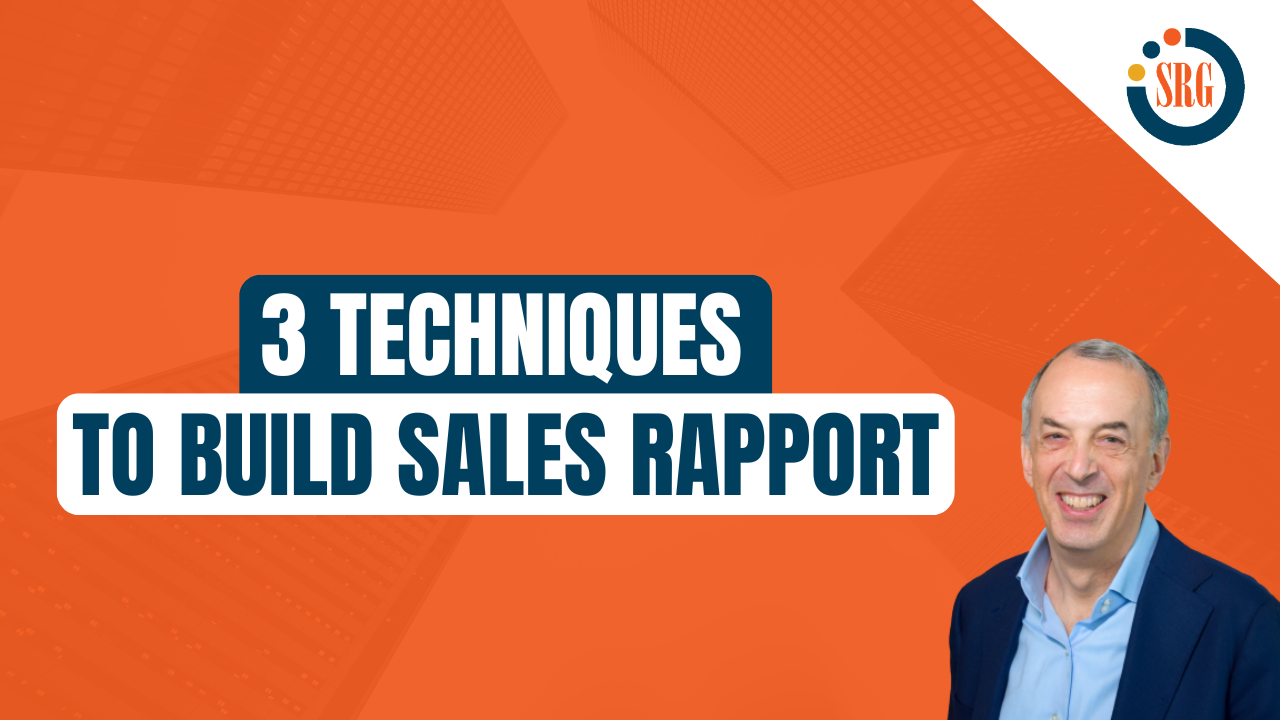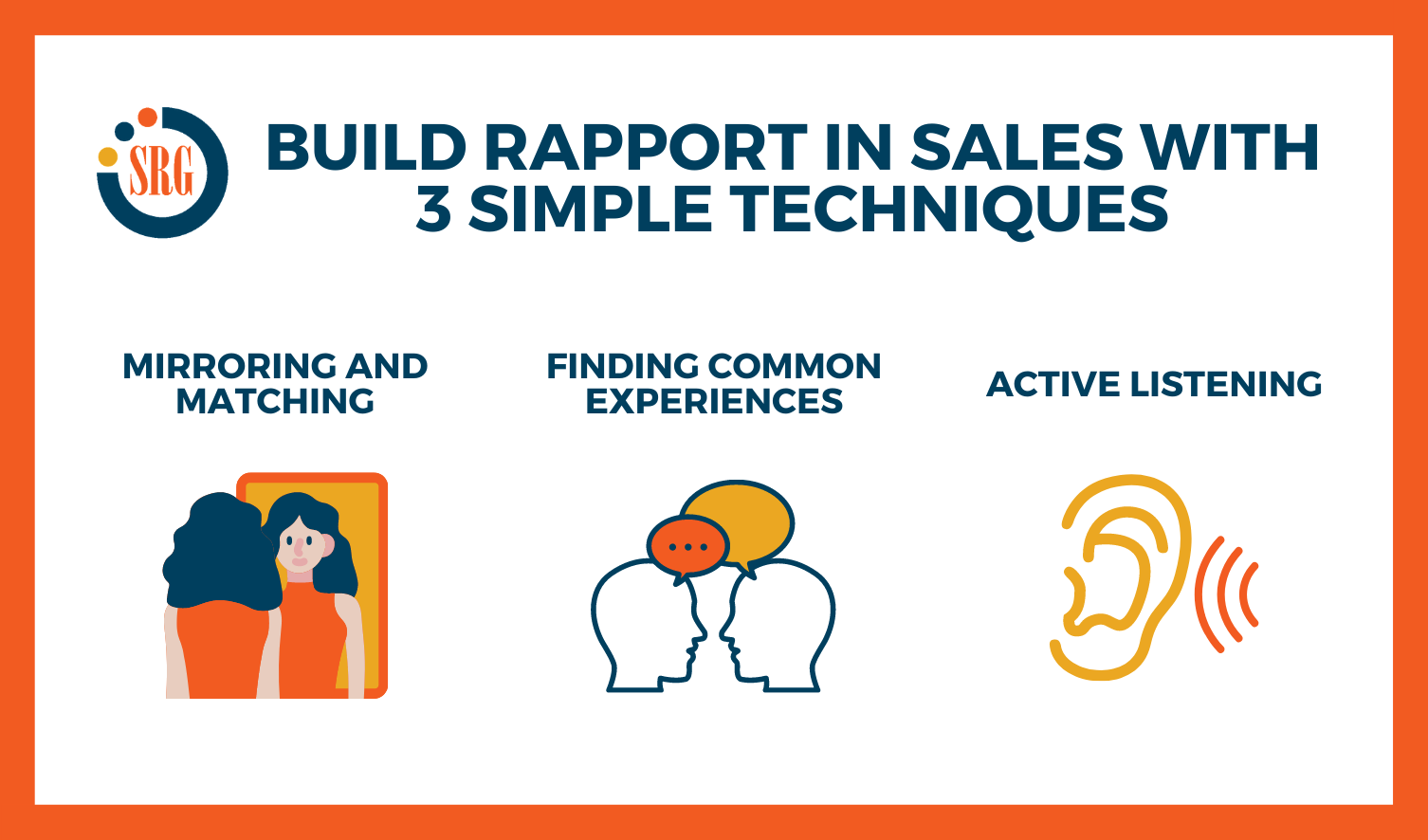How to Build Rapport in Sales With 3 Simple Techniques


Capturing the attention and trust of your potential customers is a crucial aspect of successful sales. When you establish a strong relationship, you gain their respect, the willingness to value your insights, and the potential for long-term business. But the question is, how can you build rapport effectively?
In this article, we will explore three simple yet powerful techniques that can help you build rapport effectively and make lasting connections with your customers. By implementing these strategies, you will enhance your ability to communicate better with customers and create a favorable environment for successful sales outcomes.
Whether you are a seasoned sales professional or just starting your journey, these techniques will provide you with valuable tools to build rapport and establish fruitful relationships with your customers.
Why Is Rapport-Building Important?
We all have heard the old sales adage: “People buy from people they like.” And there is a significant body of social science research that supports this concept.
When you have a strong relationship with a customer, you tend to have more influence with that customer. That means the customer respects your experience and advice, they are more likely to value your contribution to the decision process, and there is a greater chance of such a customer becoming a “long-term” customer.
One of the quickest and most effective methods for building sales relationships is building rapport. Rapport enables smooth communication because it allows people to be at ease. Sometimes this happens naturally, and you might instantly hit it off with someone. This is often how friendships are started. Other times, you have to be more deliberate in building it with someone.
3 Techniques for Building Rapport in Sales

Knowing how to build rapport in sales is an invaluable skill that can make all the difference in establishing strong customer relationships. By incorporating these techniques into your interactions with customers, you can establish a connection with customers that fosters smooth communication and increases your chances of success.
#1 Mirroring and Matching
Mirroring and matching are based on the powerful concept that people like people who are similar to themselves. Conversely, when people are not similar, it is more difficult to have a relationship with that person. You can quickly develop rapport with a customer by mirroring and matching:
- Body language: For example, if the customer sits down and crosses their legs, you do the same. This sends a positive subconscious message that you are paying attention to all of their communication (non-verbal in this case), making them essential and signaling you are on their side.
- Voice: The same rationale for mirroring and matching body language also applies to mirroring and matching the pace and volume of someone’s speech. Of course, be aware that you do not unconsciously mimic their accents.
- Communication/processing style: People communicate and process information differently. Some people are action-oriented and results-driven. These types of customers want to get down to business while others may have an emotional communication/processing style, and welcome a substantial amount of relationship-building chit-chat before getting down to business. Some customers are analytical and focused on data. These customers want the facts and don’t value lots of small talk. Recognizing your customer’s communication/processing style and adjusting how you communicate is critical for building rapport.
It is important to note that mirroring and matching techniques work at the subconscious level. Obviously, a customer will not do business just because you are mirroring and matching their body language during a meeting. However, they may be more comfortable with you and, as a result, more open to learning about your solution.
#2 Finding Common Experiences
Another powerful rapport-building technique is to find common experiences with the customer and bring them up during the conversation. This is something we all do when we first meet someone and talk about the weather, sports, or current events. This is a fast way of building it, but be sure that you don’t focus only on this step – if you don’t mirror and match your customer, the customer won’t feel that your relationship building is natural or sincere.
Social media (LinkedIn, Facebook, Pinterest) has now made it easy, even for inside sales reps who don’t have the benefit of visiting the customer in person to uncover common experiences with the customer. With social media, any salesperson can promptly research their customers and find possible common experiences such as career background, current work situation, education background, hobbies, etc.
#3 Active Listening
The 3rd strategy for building rapport in sales is active listening. Did you know that research suggests that we only remember 25%-50% of what we hear? That means we miss up to 75% of what the customer says! Active listening is a fundamental sales communication skill that is important for building relationships and all other aspects of selling.
Active listening isn’t merely hearing. Hearing is the physical process of transmitting sound waves to the brain. while active listening means that you are suspending your thoughts and you understand what you hear. When a customer perceives that you are actively listening to them, they feel important, understood, appreciated, and respected.
In order to be a good active listener, you should:
- Listen with the intent to understand. This means that as a seller you should change your focus from “pitching” your product to a mode where you are genuinely trying to understand the other person.
- Focus completely on listening. No multitasking! The word active means that you are so engaged in listening to another that you really can’t send an email, check your phone, or do anything else.
- Ask questions. You inquire to be sure that you are really understanding the speaker and to demonstrate that you are listening.
- Summarize. This technique, above all, sets a great listener apart from others. It is one thing to be able to repeat the key points of what was said. Reflecting on what it means back to the speaker is when they feel heard and understood at a deeper level.
Conclusion
Building a strong relationship with a customer is foundational to successful selling, and a great relationship begins with developing rapport. Remember these three simple techniques to help you build it on your next sales call: mirroring and matching, finding common experiences, and active listening.
Mirroring and matching allow you to create a sense of familiarity and understanding by aligning your body language, voice, and communication style with that of your customer. This subconscious connection puts them at ease and increases their receptiveness to your message.
Finding common experiences, whether through social media or casual conversation, helps to establish common ground and shared interests. It demonstrates your genuine interest in understanding their world and builds a foundation of trust.
Active listening, the art of truly understanding and engaging with your customer, is a fundamental skill that sets great sales professionals apart. By focusing solely on listening, asking insightful questions, and summarizing their thoughts, you create an environment where customers feel valued, respected, and heard.
Remember, building rapport in sales is not just a one-time effort but an ongoing commitment to nurturing strong customer relationships. By incorporating these techniques into your sales approach, you can foster smooth communication, gain trust, and increase your chances of long-term success.
💬 Join the Conversation
What approaches have you found to be most helpful for building sales relationships? Share your tips and experiences here.
